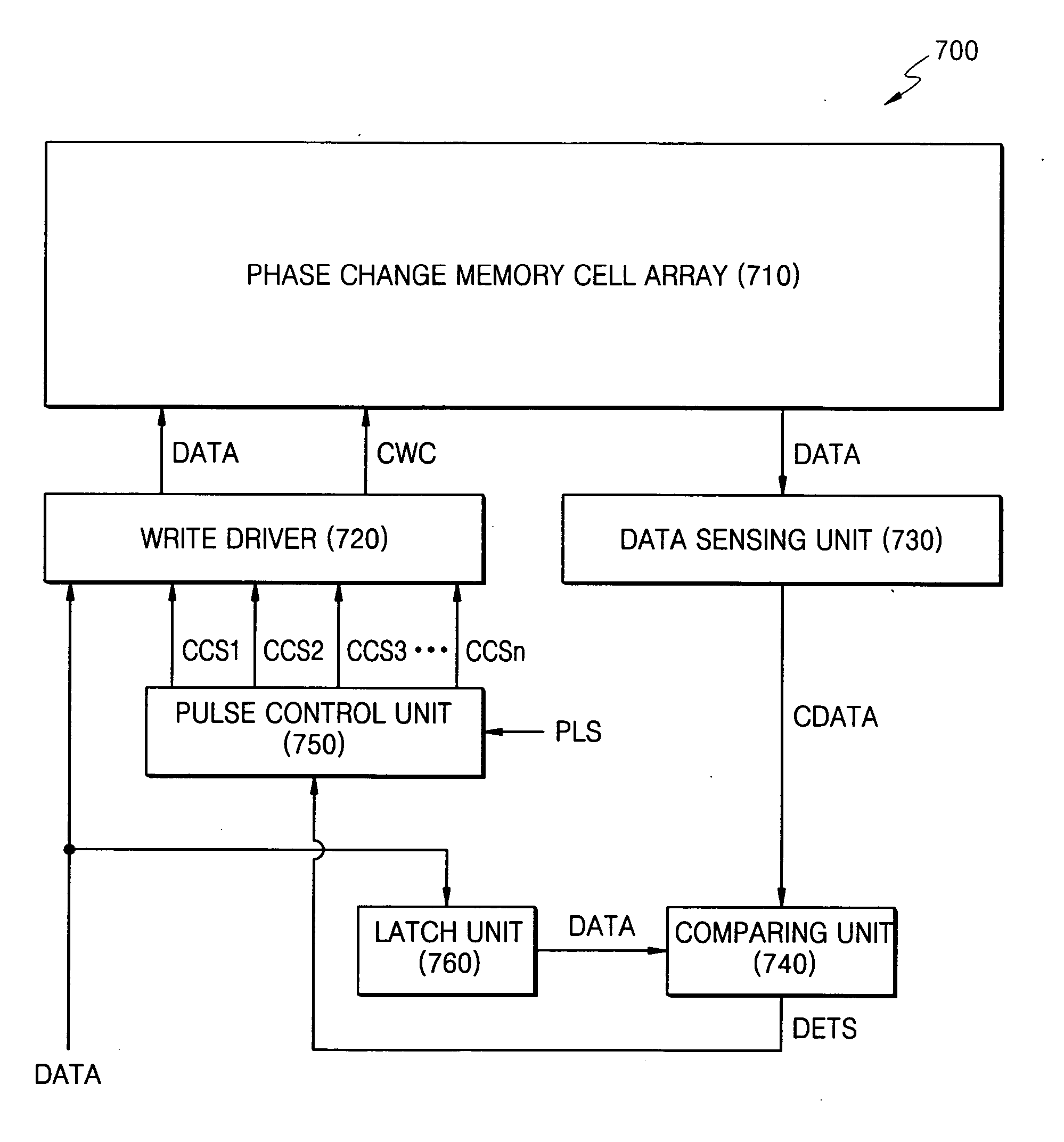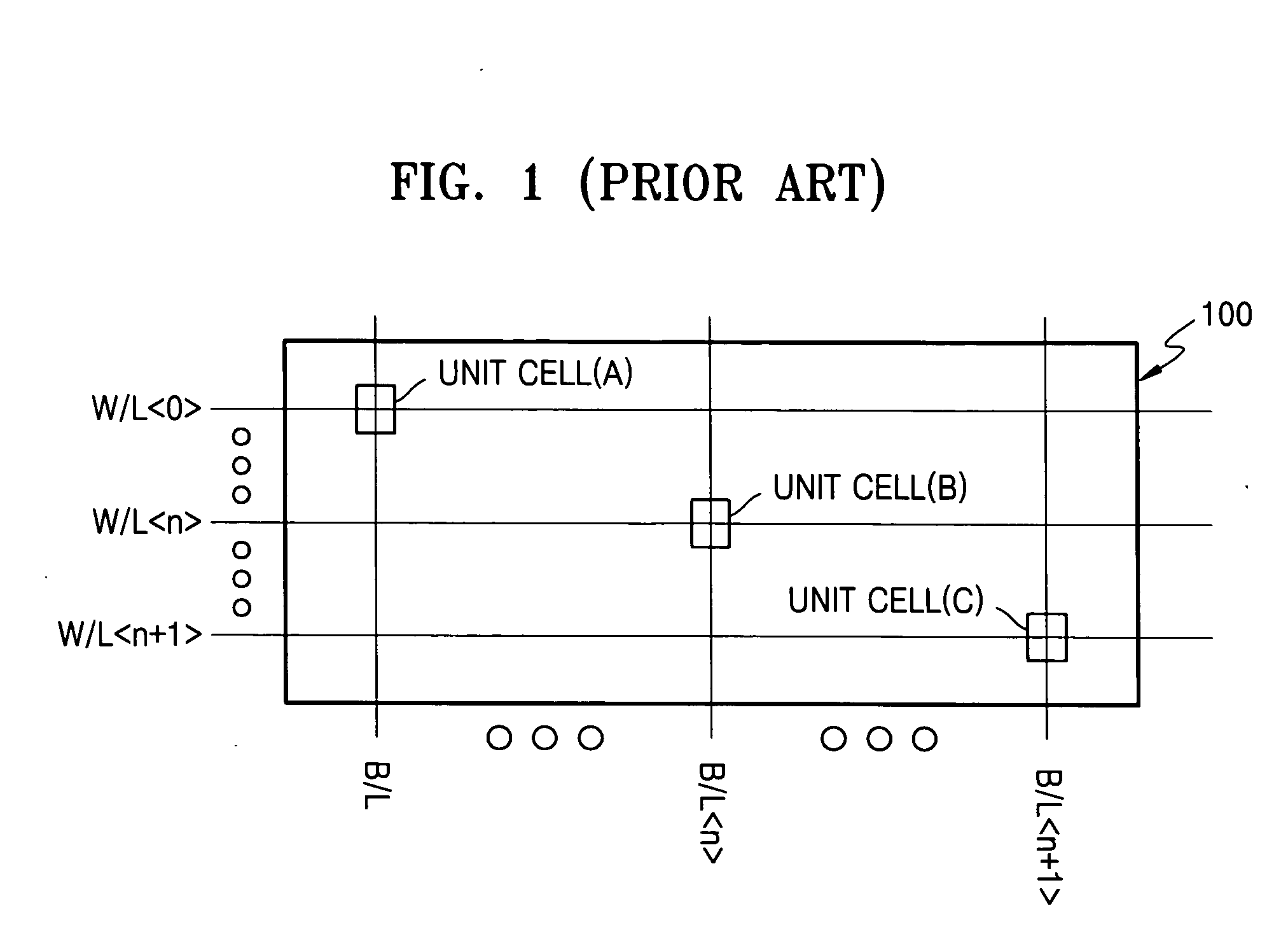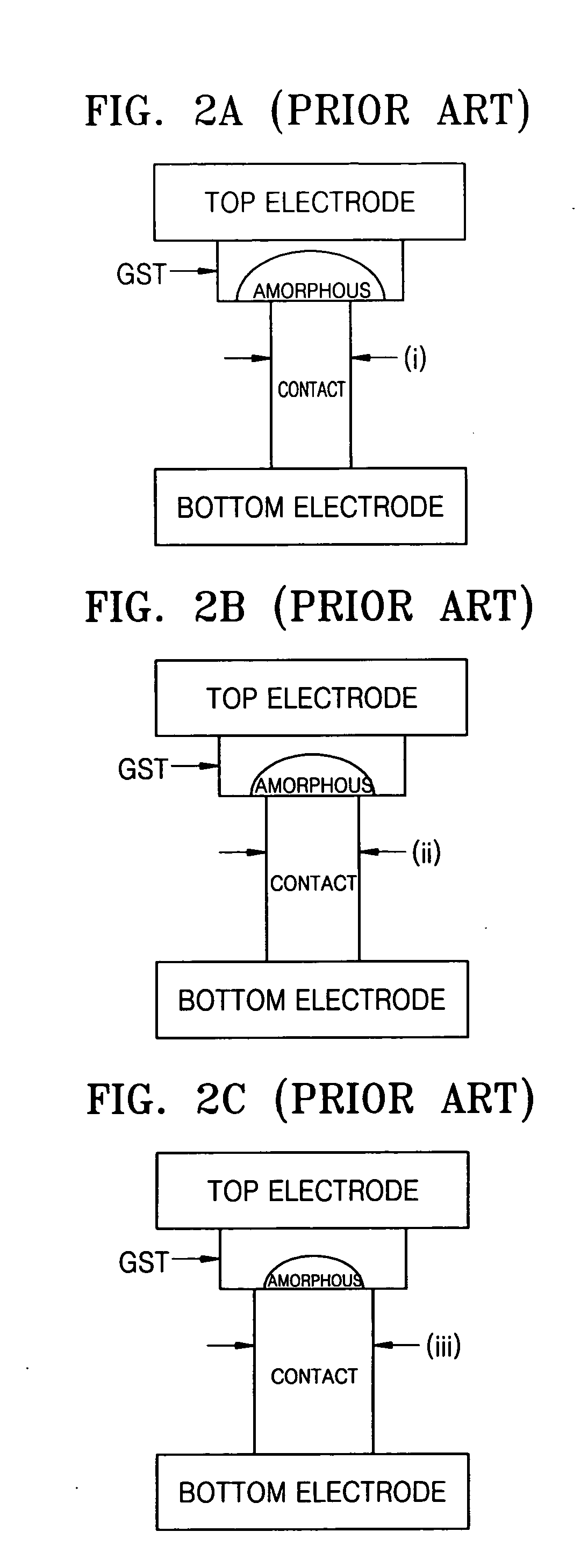Phase-change memory device and method that maintains the resistance of a phase-change material in a reset state within a constant resistance range
a phase-change memory and resistance technology, applied in semiconductor devices, digital storage, instruments, etc., can solve the problems of delay in the transition to the reset state, failure of the read operation, and non-uniform widths of the bottom contacts that contact the phase-change materials, so as to increase the complementary write current
- Summary
- Abstract
- Description
- Claims
- Application Information
AI Technical Summary
Benefits of technology
Problems solved by technology
Method used
Image
Examples
Embodiment Construction
[0040]FIG. 4 is a flowchart illustrating a method 400 of maintaining a resistance of a phase-change material in a reset state within a constant resistance range, according to an exemplary embodiment of the present invention.
[0041] According to the method 400, reset data for causing a phase-change material of a phase-change memory cell to enter a reset state is provided to the phase-change memory cell, and then it is determined whether the phase-change memory cell has entered the reset state. During this time, current is provided to the phase-change material until the phase-change material has gone into the reset state. If it is determined that the phase-change material has gone into the reset state, reset data is provided to another phase-change memory cell.
[0042] As shown in FIG. 4, in step 410, data is provided to a phase-change memory cell. Here, the data is reset data. Step 410 is performed to enable the phase-change memory cell to stabilize in the reset state irrespective of ...
PUM
 Login to View More
Login to View More Abstract
Description
Claims
Application Information
 Login to View More
Login to View More - R&D
- Intellectual Property
- Life Sciences
- Materials
- Tech Scout
- Unparalleled Data Quality
- Higher Quality Content
- 60% Fewer Hallucinations
Browse by: Latest US Patents, China's latest patents, Technical Efficacy Thesaurus, Application Domain, Technology Topic, Popular Technical Reports.
© 2025 PatSnap. All rights reserved.Legal|Privacy policy|Modern Slavery Act Transparency Statement|Sitemap|About US| Contact US: help@patsnap.com



